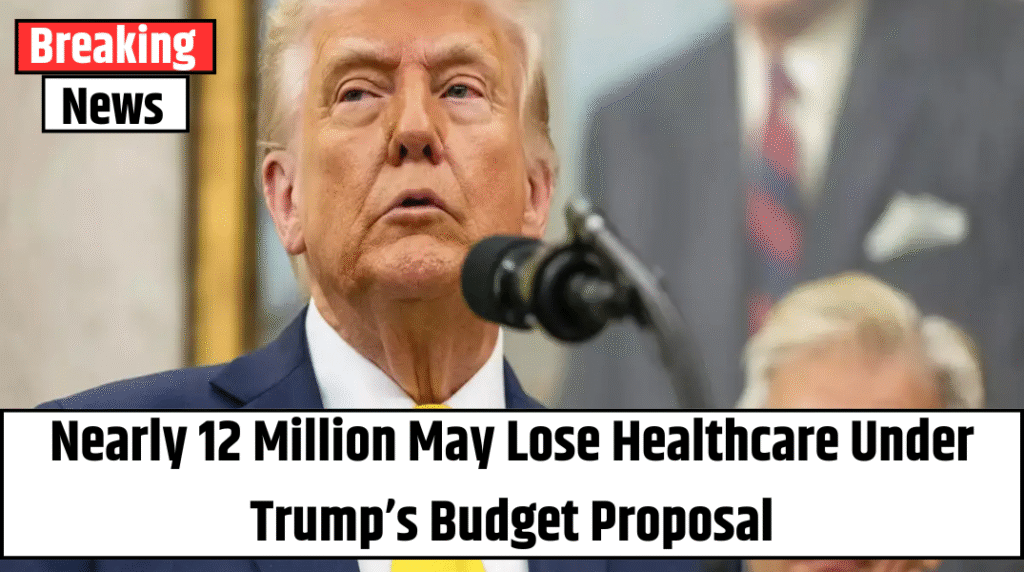A controversial spending proposal backed by President Donald Trump has taken a significant step forward in the U.S. Senate, but not without sparking a fierce debate. If passed, the wide-ranging legislation—nicknamed the “One Big Beautiful Bill Act”—could cut health insurance for nearly 12 million Americans and add $3.3 trillion to the national debt, according to new figures from the Congressional Budget Office (CBO).
The bill, which narrowly advanced on Saturday with a 51-49 vote, still faces major hurdles before final passage. The CBO’s non-partisan analysis has added fuel to an already heated debate, highlighting drastic cuts to Medicaid and increased fiscal risks for the country.
GOP Divided, Democrats on the Attack
Despite Republican control of the Senate, unity remains elusive. Two GOP senators—Rand Paul (KY) and Thom Tillis (NC)—broke ranks, siding with Democrats to oppose the bill’s advancement. Paul cited concerns over ballooning national debt, while Tillis warned the legislation could devastate healthcare funding in his state.
In a surprising turn, Tillis announced he would not seek reelection, likely signaling long-term frustration with his party’s legislative direction.
Democrats have been relentless in their criticism. Senator Mark Warner (D-VA) called the proposal “a tax giveaway to the wealthy at the expense of healthcare for millions.” The CBO estimates $1 trillion in healthcare cuts if the bill becomes law.
Trump Pushes for Pre-July 4 Victory
President Trump hailed Saturday’s vote as a “great victory” and is pushing to have the bill signed into law before Independence Day. The White House has warned that failure to pass the legislation would be a “betrayal” of the American people.
The bill is now under a 20-hour Senate debate window, during which Democrats are expected to use every procedural tool to delay a final vote. They’ve already forced a marathon 16-hour reading of the nearly 1,000-page bill, underscoring its complexity and controversy.
Also Read – U.S. Church Teams Up with Global Health Groups for Mission in Peru
What’s Actually in the Bill?
The “Big Beautiful Bill” is a blend of tax relief and spending reductions. Here are some of its core components:
-
Tax cuts on Social Security benefits, tips, and overtime—expanding on the 2017 GOP tax plan
-
A renewed work requirement for adults seeking Medicaid benefits
-
Restrictions on the SNAP (food stamps) program, mandating proof of employment for parents of teens
-
A cap on how much states can tax medical providers, reducing Medicaid funding streams
-
$10 billion boost for rural hospital aid after Republican senators raised red flags
The bill also shifts some healthcare costs from the federal government to states starting in 2028, a change that could place a heavy burden on already cash-strapped state budgets.
A Deeply Divisive Vision
Republicans argue the plan is about efficiency, fairness, and reducing fraud in social welfare programs. Senator Markwayne Mullin (R-OK) defended the cuts, saying, “We don’t pay people in this country to be lazy.” He emphasized that the bill would target those misusing benefits, not those in genuine need.
However, critics say the bill unfairly targets low-income Americans while offering significant financial breaks to the wealthiest taxpayers. According to the Tax Policy Center, while over 80% of Americans would see a tax cut, the top earners would benefit the most—both in dollars and percentage of income.
Also Read – Unexpected Impact: How Fewer Doctors Once Meant Lower Mortality in the U.S.
What’s Next?
While Republicans currently control 53 Senate seats, they can only afford to lose three votes. Vice President JD Vance could step in to break a tie if needed. Even if the bill clears the Senate, it must pass through the House of Representatives before reaching President Trump’s desk.
Will the “One Big Beautiful Bill” fulfill Trump’s vision—or collapse under its own weight? The coming days will reveal whether this ambitious, polarizing proposal survives the legislative gauntlet.



